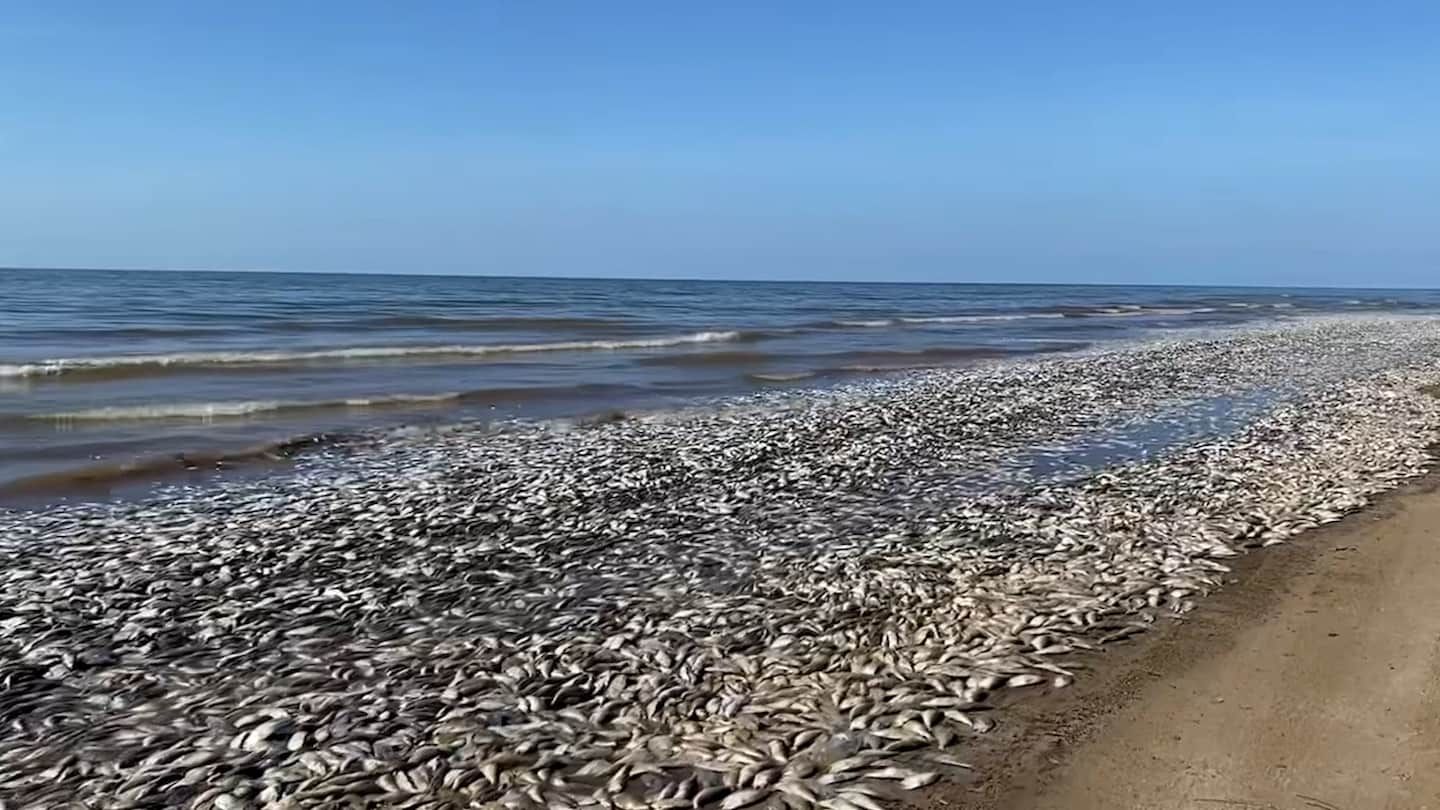Warm ocean water leaves thousands of dead fish on Texas beaches
Listen 4 min Comment on this story Comment Gift Article Share
Darrell Schoppe had been looking forward to his fishing trip all of last week, so he got up early Friday and headed to a beach on Texas’s Gulf Coast. But as he drove on the sand in his Jeep Wrangler to watch the sunrise, he saw a surprising, and terrifying, scene.
Tens of thousands of dead fish — menhaden, sharks, trout, bass, catfish and stingrays — were covering the shore. Schoppe, 54, had lived near the Gulf Coast his entire life, but he had never seen that many dead fish. He recorded videos of the ocean as he drove along the shore, finding the washed-up fish along a roughly seven-mile stretch near Freeport, Tex.
“That’s all I could do at that point because I was just kind of in awe,” Schoppe told The Washington Post. “Of course I wasn’t going to go wait out there to try to catch any trout; everything was pretty much dead.”
Advertisement
Schoppe was one of the first witnesses to the scene. Texas officials later advised visitors to avoid the water while cleaning crews cleared the fish.
While low oxygen levels cause fish to die every summer, a combination of warm water, calm seas and cloudy conditions left oxygen levels so low on Friday that it led to more dead fish than many officials had ever seen.
“By the time you get one stretch of it raked and cleaned off and pushed back, you look back and a whole new wave of them have come ashore,” said Bryan Frazier, director of the Brazoria County Parks Department. “So you’ve got to do it all over again.”
Frazier said cold water can hold more oxygen than warm water, and temperatures reached as high as 92 degrees in Brazoria County on Friday, according to the National Weather Service. For menhaden — the silvery, roughly foot-long fish most affected Friday — living in temperatures above 70 degrees can be difficult, officials said. Frazier said it would be tough to determine how warm the water was because it’s unclear exactly where the fish died before surfacing.
Advertisement
Oxygen also enters water by mixing with wind and waves, Frazier said, but the Gulf Coast’s waves have been calm for about three weeks. Likewise, photosynthesis creates oxygen, but a lack of sunlight the previous few days halted the energy-producing process, Frazier said.
Officials called the conditions “the perfect storm to deplete the oxygen levels inshore.”
Nevertheless, fish-kill events happen almost every summer in Texas, officials said. The northern Gulf of Mexico forms one of the world’s largest “dead zones” of fish, according to the National Ocean Service.
Katie St. Clair, a sea life facility manager with Texas A&M University at Galveston, said that menhaden are crucial to the ocean’s ecosystem because they filter the water and serve as food for other fish. But St. Clair said fish in the Gulf are accustomed to adjusting and repopulating.
Advertisement
“This area is used to these dynamic events,” she said.
Cleaning crews began using beach rakes and tractors Friday to bury the dead fish under dunes. Employees watched as dead fish constantly moved toward the shore, where thousands more surfaced Saturday and Sunday.
Some people still visited the beach and dipped into the water, but Frazier said the area smelled like an “old fish market” all weekend as fish sat in the heat. Schoppe said his Jeep still smells like dead fish from driving near the shore, and he has since parked it outside of his garage.
Advertisement
“My wife said, ‘Nope, it’s staying outside until that stink goes away,’” Schoppe said.
One of the local beaches, Quintana Beach County Park, was clear of fish by Monday night, its supervisor said. Frazier said fish were still surfacing on other beaches Monday afternoon.
With students out of school for the summer, Frazier hopes the county’s beaches will become a relaxing destination again.
“Just because it’s a natural phenomena does not make it pleasant; that’s not something anybody likes to see,” Frazier said. “But nature has a way of bouncing back.”
GiftOutline Gift Article
Source: The Washington Post


